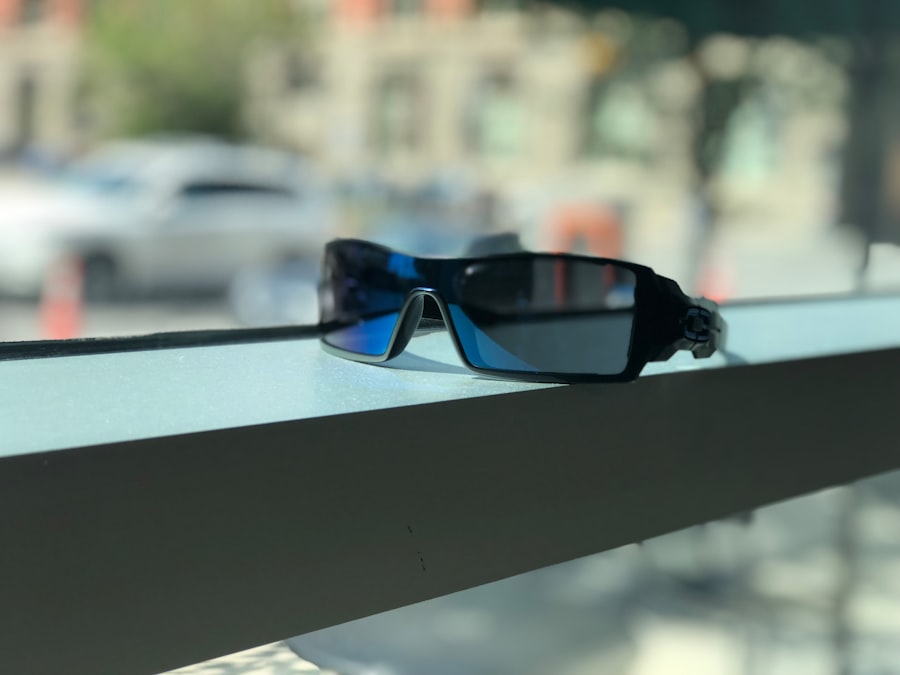The advent of 5G technology marks a significant leap forward in mobile connectivity, promising to revolutionize the way we interact with the digital world. With its unprecedented speed, low latency, and ability to connect a multitude of devices simultaneously, 5G is set to enhance various sectors, including entertainment, healthcare, and education. Augmented Reality (AR) and Virtual Reality (VR) are two of the most exciting applications that stand to benefit from this technological evolution.
AR overlays digital information onto the real world, while VR immerses users in entirely virtual environments. Together, these technologies have the potential to create experiences that are not only more engaging but also more informative and interactive. As 5G networks continue to roll out globally, the synergy between this advanced connectivity and AR/VR applications becomes increasingly apparent.
The combination of high-speed data transfer and immersive experiences opens up new avenues for creativity and innovation. For instance, industries such as gaming and training simulations can leverage these advancements to create more realistic and responsive environments. Furthermore, as 5G becomes more ubiquitous, the barriers that previously limited the adoption of AR and VR—such as lag and connectivity issues—are gradually being dismantled.
This integration is not merely a technological upgrade; it represents a paradigm shift in how we perceive and interact with both the physical and digital realms.
Key Takeaways
- 5G and AR/VR are revolutionizing connectivity and immersive experiences.
- 5G offers faster and more reliable connectivity, reducing latency and enabling seamless AR/VR experiences.
- AR/VR experiences are enhanced with 5G, offering higher resolution, smoother streaming, and more interactive content.
- New opportunities for AR/VR applications are emerging in fields such as healthcare, education, and entertainment.
- Challenges and limitations include the need for infrastructure investment and potential privacy and security concerns.
- Industries and businesses can leverage 5G and AR/VR integration for improved customer engagement, training, and product development.
- The future of 5G and AR/VR integration holds promise for even more advanced and widespread applications, transforming various industries and everyday experiences.
Faster and More Reliable Connectivity
Faster and More Reliable Connectivity
One of the most compelling advantages of 5G technology is its ability to provide faster and more reliable connectivity compared to its predecessors. With download speeds that can reach up to 10 gigabits per second, 5G enables seamless streaming of high-definition content and real-time data processing. This is particularly crucial for AR and VR applications, which require substantial bandwidth to deliver rich, immersive experiences without interruptions.
Low Latency for Seamless Interactions
The low latency characteristic of 5G—often as low as one millisecond—ensures that users experience minimal lag when interacting with virtual environments or augmented overlays. This responsiveness is vital for applications such as remote surgery or real-time training simulations, where even a slight delay can have significant consequences. Moreover, the reliability of 5G networks enhances user confidence in adopting AR and VR technologies.
Scalability for Multi-User Experiences
In environments where connectivity is paramount, such as crowded urban areas or large events, 5G’s ability to support a vast number of simultaneous connections without degradation in performance is a game-changer. This capability allows for more robust multi-user experiences in virtual spaces, where multiple participants can interact in real-time without experiencing delays or disruptions. As a result, industries that rely on collaborative efforts—such as architecture, design, and education—can utilize AR and VR tools more effectively, fostering innovation and creativity in ways that were previously unattainable.
Enhanced AR/VR Experiences

The integration of 5G technology into AR and VR applications significantly enhances the overall user experience by providing richer, more detailed environments. With the increased bandwidth offered by 5G, developers can create high-resolution graphics and complex simulations that were once limited by the constraints of earlier network technologies. This means that users can engage with virtual worlds that are not only visually stunning but also filled with intricate details that enhance immersion.
For example, in gaming, players can explore expansive landscapes with dynamic weather systems and realistic physics, making their interactions feel more authentic and engaging. In addition to visual enhancements, 5G also facilitates improved interactivity within AR and VR environments. The low latency associated with 5G allows for instantaneous feedback when users interact with virtual objects or navigate through augmented spaces.
This immediacy transforms the way users engage with content; for instance, in educational settings, students can manipulate 3D models of complex structures or biological systems in real-time, leading to deeper understanding and retention of information. Furthermore, the ability to stream high-quality audio alongside visual elements creates a more holistic experience that captivates users’ senses, making AR and VR applications not just tools for entertainment but powerful mediums for learning and exploration.
Opportunities for New AR/VR Applications
The convergence of 5G technology with AR and VR opens up a plethora of opportunities for innovative applications across various sectors. In healthcare, for instance, medical professionals can utilize AR for enhanced surgical precision by overlaying critical information directly onto their field of view during procedures. This capability not only improves outcomes but also reduces the time required for surgeries, ultimately benefiting patients.
Similarly, VR can be employed for therapeutic purposes, allowing patients to confront phobias or manage pain through immersive experiences designed to distract or desensitize them from their conditions. In the realm of retail, businesses can leverage AR to create interactive shopping experiences that allow customers to visualize products in their own environments before making a purchase. Imagine a customer using their smartphone to see how a piece of furniture would look in their living room or trying on clothes virtually without stepping into a fitting room.
Such applications not only enhance customer engagement but also streamline the decision-making process, potentially leading to higher conversion rates. Additionally, industries like tourism can benefit from AR-guided tours that provide historical context or additional information about landmarks in real-time, enriching the travel experience without overwhelming visitors with information.
Challenges and Limitations
Despite the promising potential of integrating 5G with AR and VR technologies, several challenges and limitations must be addressed before widespread adoption can occur. One significant hurdle is the infrastructure required to support 5G networks. While urban areas may see rapid deployment of 5G towers and antennas, rural regions often lag behind due to economic constraints and lower population densities.
This disparity creates a digital divide that could limit access to advanced AR and VR applications for certain demographics, hindering equitable growth across different sectors. Moreover, there are concerns regarding privacy and security as more devices become interconnected through 5G networks. The vast amount of data generated by AR and VR applications raises questions about how this information is stored, shared, and protected from potential breaches.
Users may be hesitant to fully embrace these technologies if they feel their personal data is at risk or if they are unsure about how their interactions are being monitored. Addressing these concerns will require robust regulatory frameworks and transparent practices from companies developing AR and VR solutions to ensure user trust and safety.
Implications for Industries and Businesses

The integration of 5G technology with AR and VR has profound implications for various industries and businesses seeking to innovate and stay competitive in an increasingly digital landscape. In manufacturing, for example, companies can utilize AR for remote assistance during assembly processes or maintenance tasks. Technicians equipped with AR glasses can receive real-time guidance from experts located elsewhere, reducing downtime and improving efficiency on the production floor.
This capability not only enhances operational productivity but also fosters a culture of continuous learning within organizations. In the realm of marketing and advertising, businesses can harness the power of AR to create immersive campaigns that captivate consumers’ attention in ways traditional media cannot achieve. Interactive advertisements that allow users to engage with products through their smartphones or smart glasses can lead to higher engagement rates and brand loyalty.
Furthermore, as companies increasingly adopt remote work models, VR can facilitate virtual meetings that simulate face-to-face interactions, enhancing collaboration among teams spread across different geographical locations. The implications are vast; organizations that embrace these technologies stand to gain a competitive edge by enhancing customer experiences while optimizing internal processes.
The Future of 5G and AR/VR Integration
Looking ahead, the future of 5G integration with AR and VR technologies appears bright yet complex. As network infrastructure continues to expand globally, we can expect an influx of innovative applications that push the boundaries of what is possible in both personal and professional contexts. The ongoing development of edge computing will further enhance this integration by processing data closer to where it is generated rather than relying solely on centralized servers.
This shift will reduce latency even further and enable real-time analytics that can inform decision-making across various sectors. Moreover, as consumer acceptance of AR and VR grows alongside advancements in hardware—such as lighter headsets with improved battery life—the potential for widespread adoption becomes increasingly feasible. Industries will likely continue exploring novel use cases that leverage these technologies for training simulations, remote collaboration, entertainment experiences, and beyond.
However, it will be essential for stakeholders—including developers, businesses, regulators, and consumers—to collaborate in addressing challenges related to privacy, security, and accessibility as we navigate this transformative landscape together. Ultimately, the integration of 5G with AR and VR holds the promise of reshaping our interactions with technology in ways we are only beginning to imagine.
For those interested in the technological advancements brought by 5G, particularly in the realm of mobile devices, you might find the article “Unlock the Power of the Galaxy with the Samsung S22 Ultra” particularly enlightening. This article explores how the integration of 5G technology in the Samsung S22 Ultra enhances its capabilities, making it a formidable tool for augmented reality (AR) and virtual reality (VR) applications. The increased bandwidth and lower latency provided by 5G are crucial for the seamless operation of AR and VR technologies, which are heavily reliant on real-time data transmission. To learn more about how 5G technology is transforming mobile devices and their applications in AR and VR, read the full article here.
FAQs
What is 5G?
5G is the fifth generation of wireless technology, designed to provide faster and more reliable communication networks compared to its predecessors.
What is Augmented Reality (AR) and Virtual Reality (VR)?
Augmented Reality (AR) is a technology that overlays digital information such as images, videos, or 3D models onto the real world, while Virtual Reality (VR) is a simulated experience that can be similar to or completely different from the real world.
How does 5G impact AR and VR applications?
5G’s faster speeds and lower latency enable more seamless and immersive AR and VR experiences, allowing for higher quality graphics, smoother streaming, and more responsive interactions.
What are some potential use cases for 5G-enabled AR and VR applications?
Potential use cases include enhanced remote collaboration, improved gaming experiences, more immersive entertainment content, advanced training simulations, and innovative marketing and advertising experiences.
What are the challenges of integrating 5G with AR and VR technologies?
Challenges include the need for compatible devices and infrastructure, potential security and privacy concerns, and the requirement for robust network coverage to fully realize the potential of 5G-enabled AR and VR applications.

